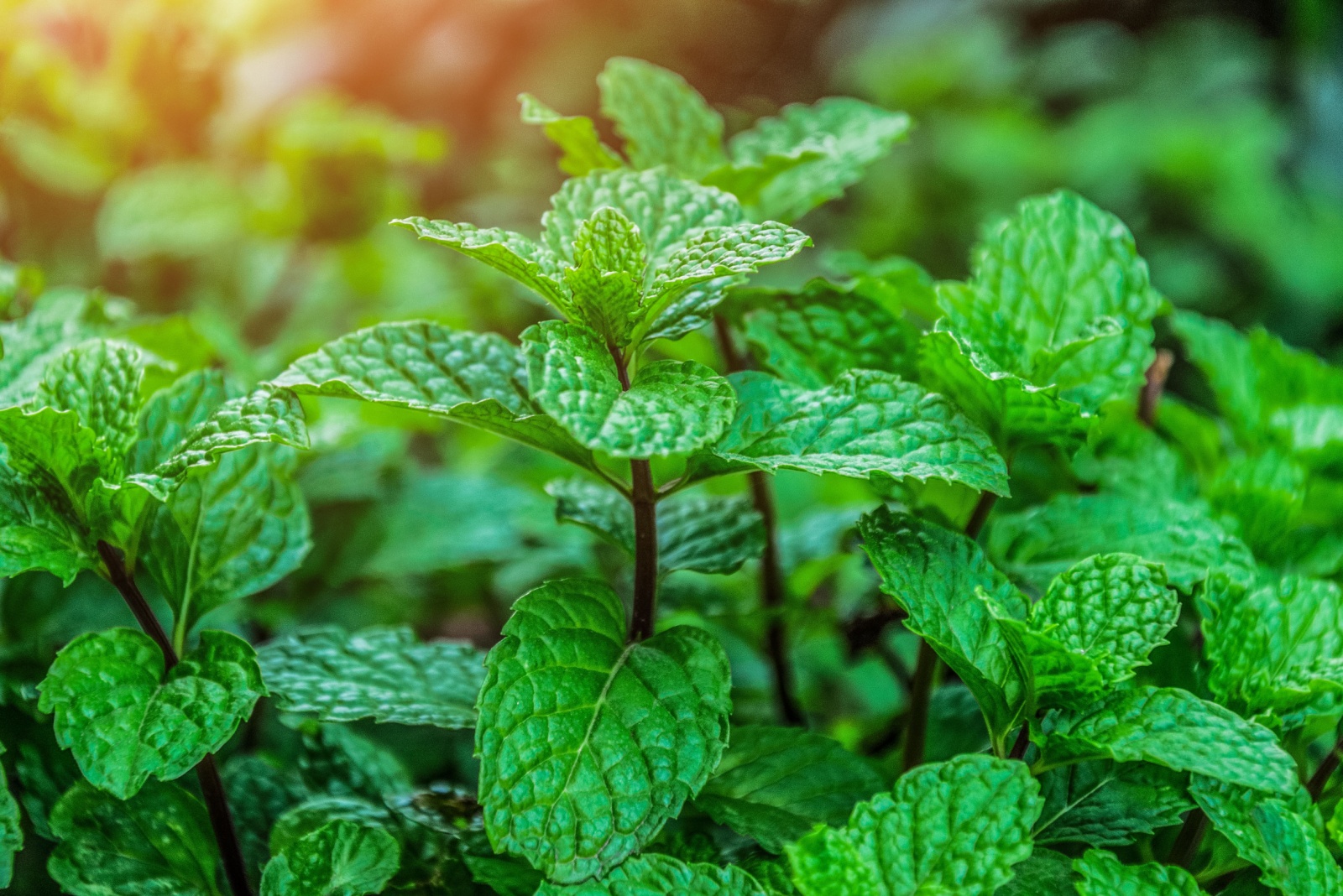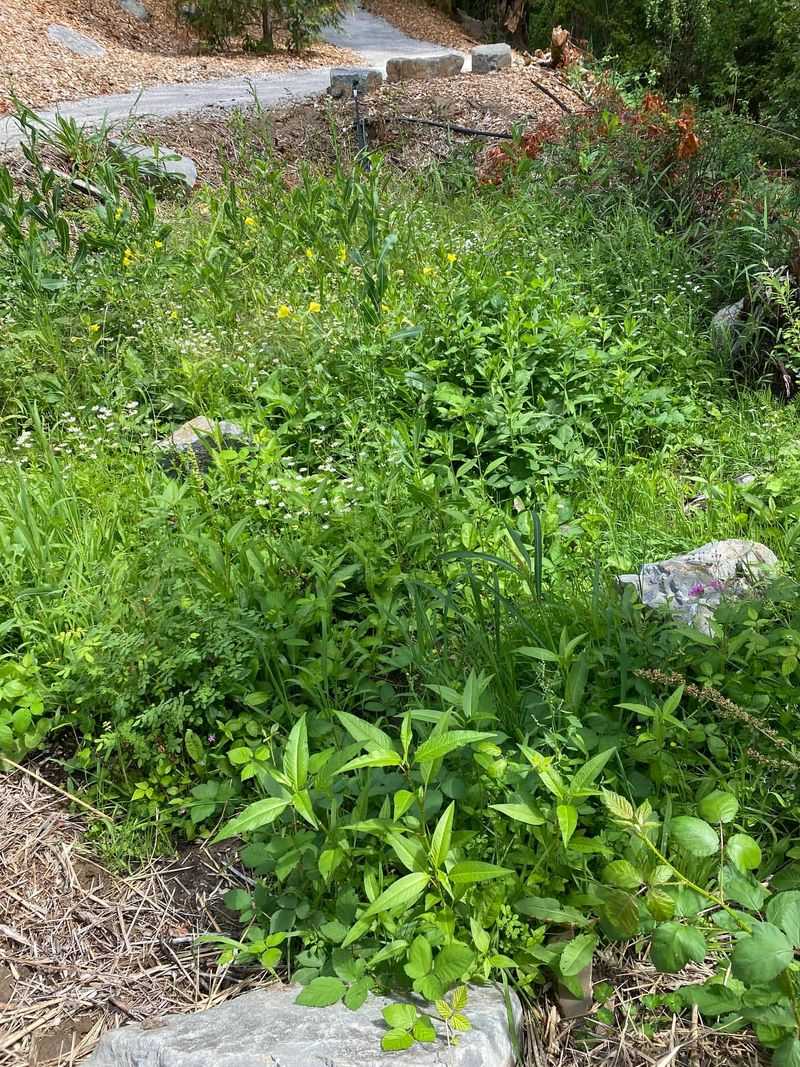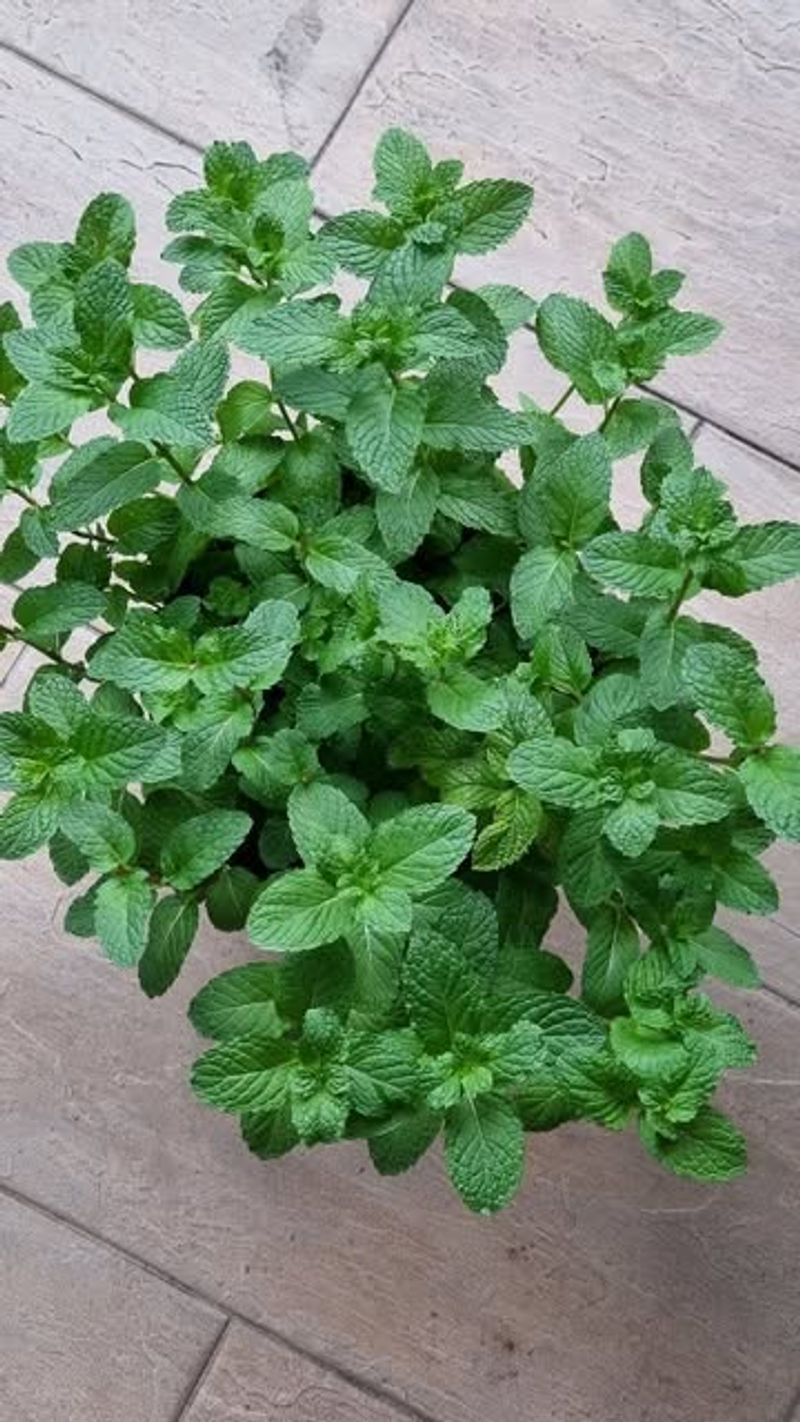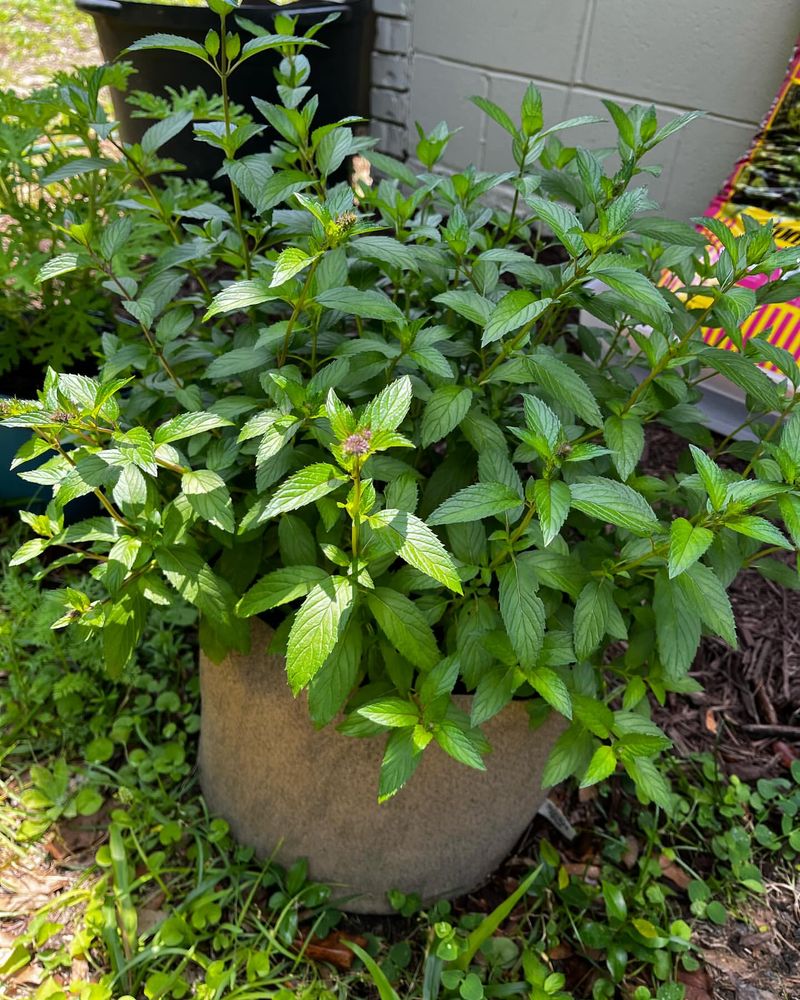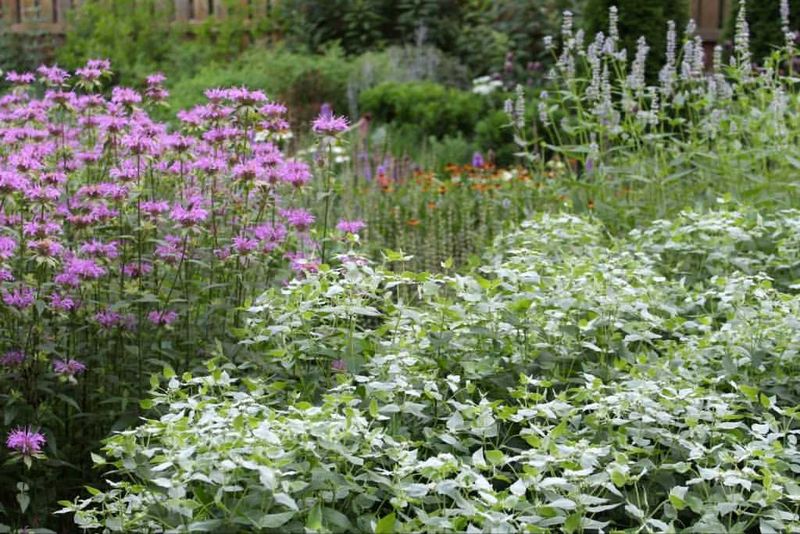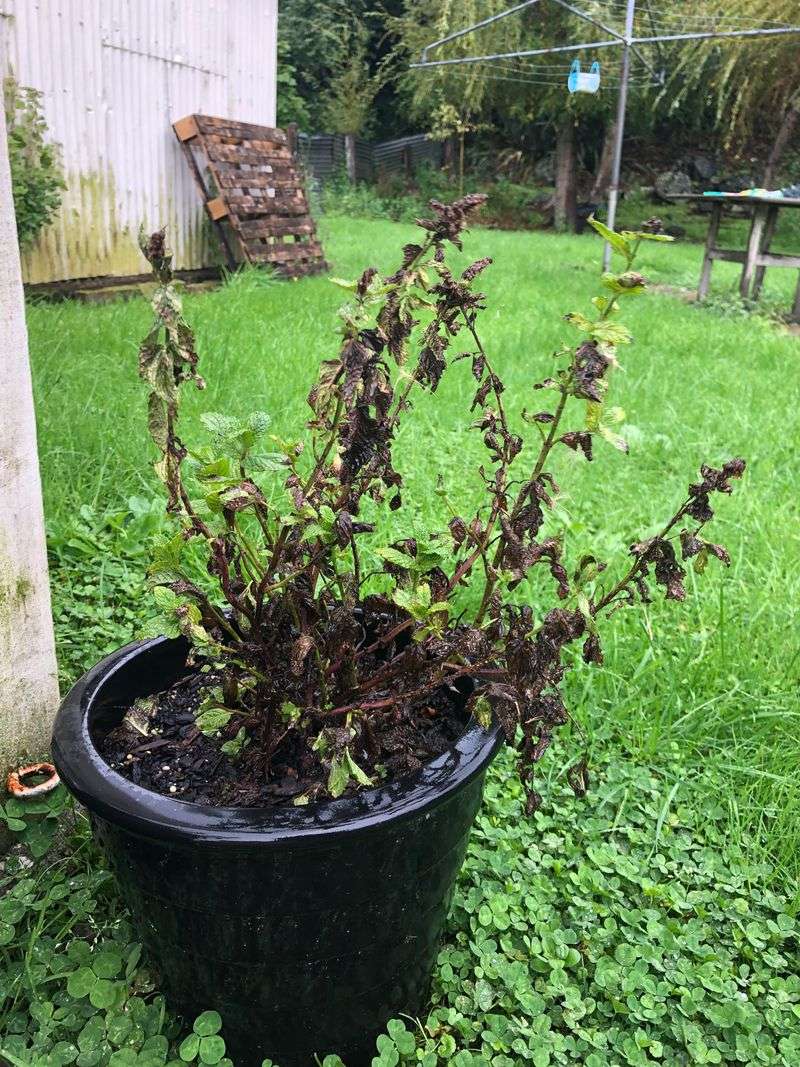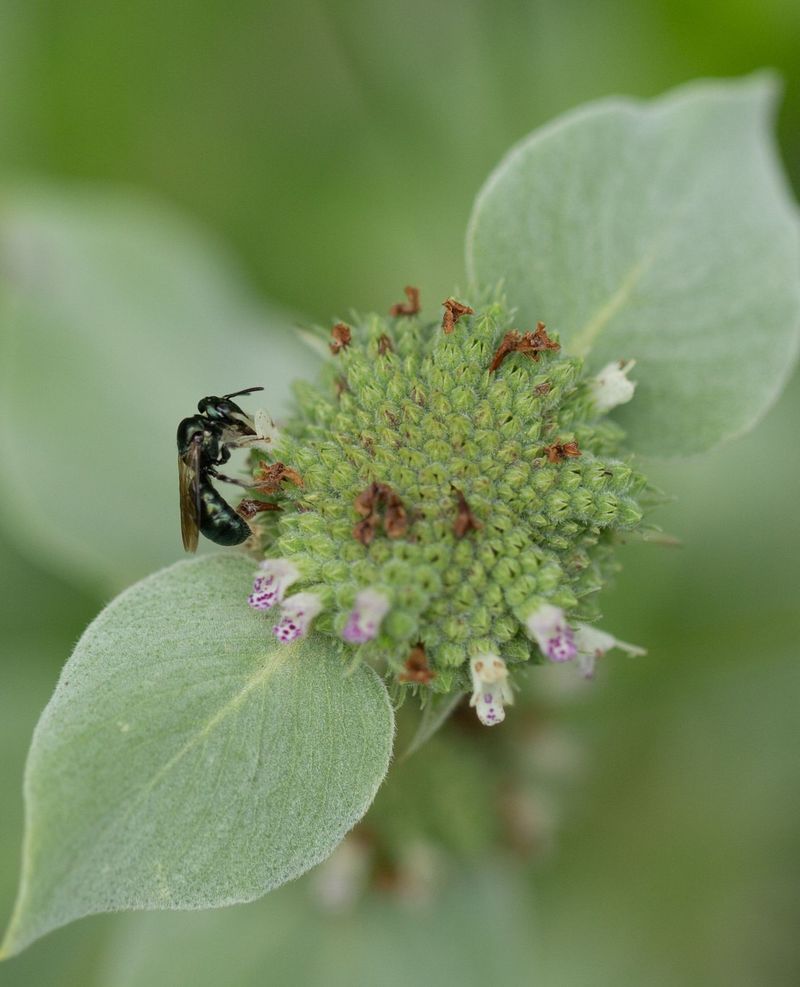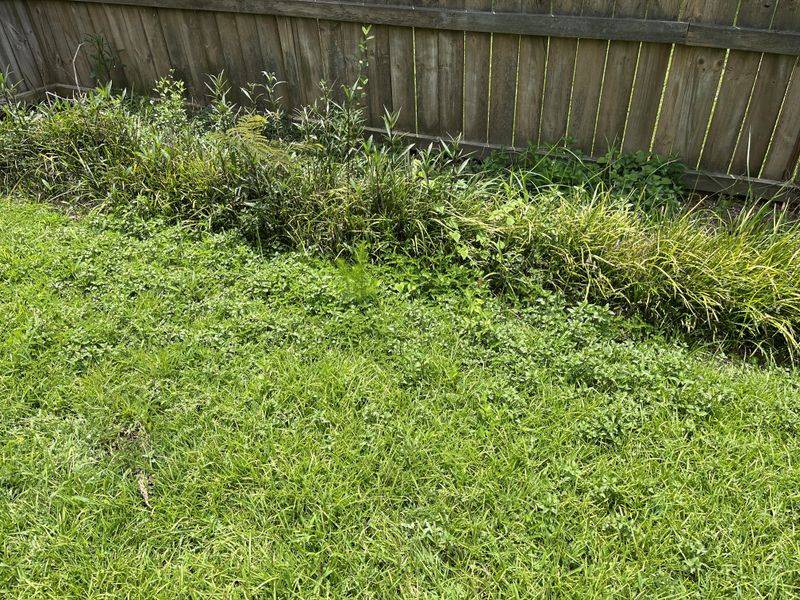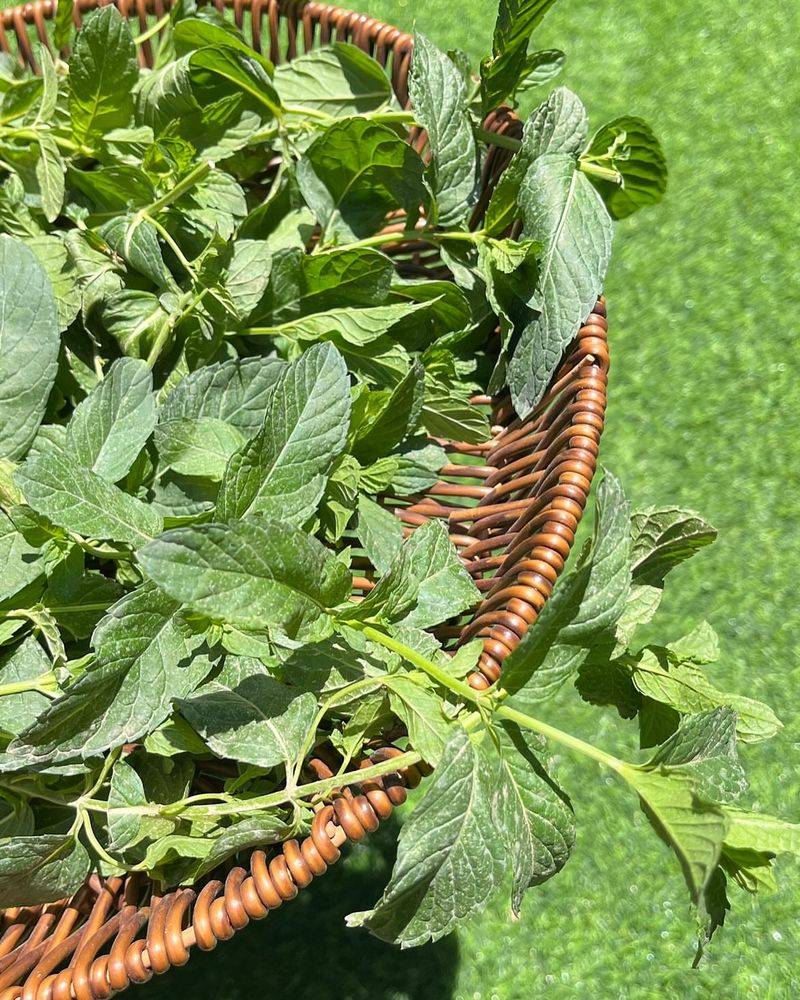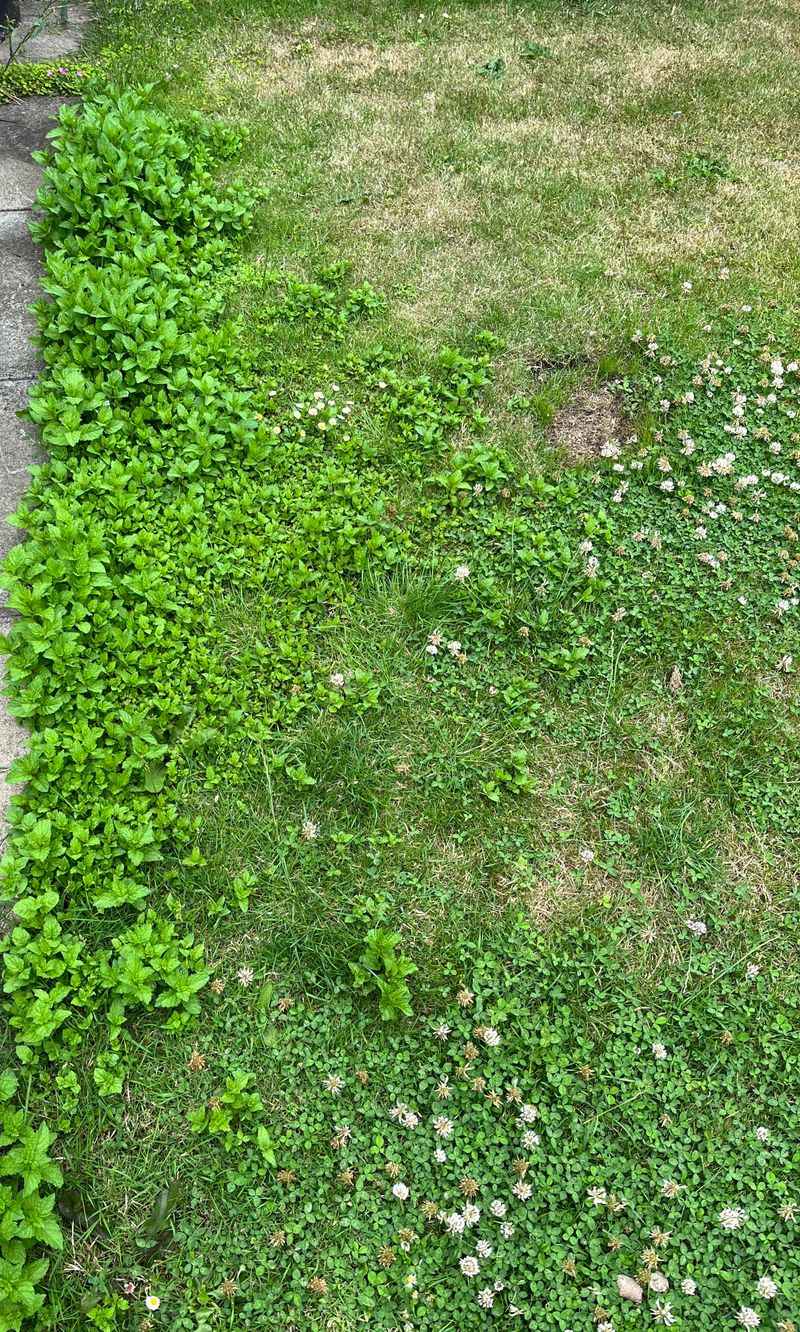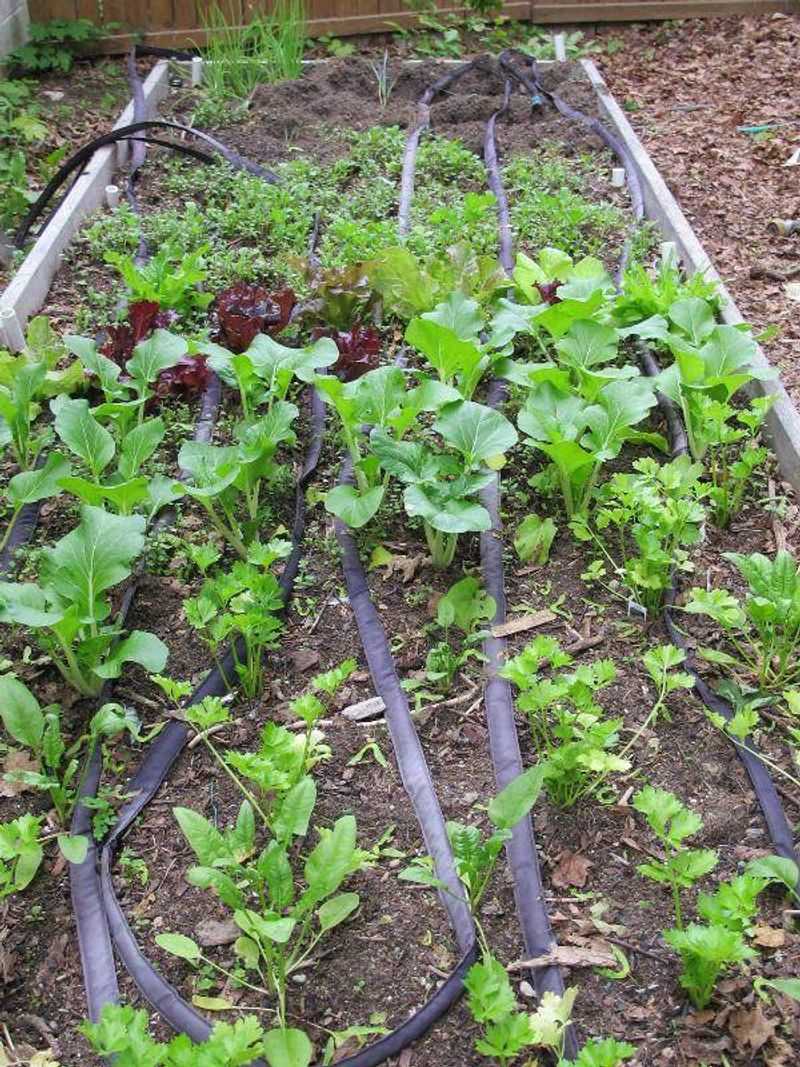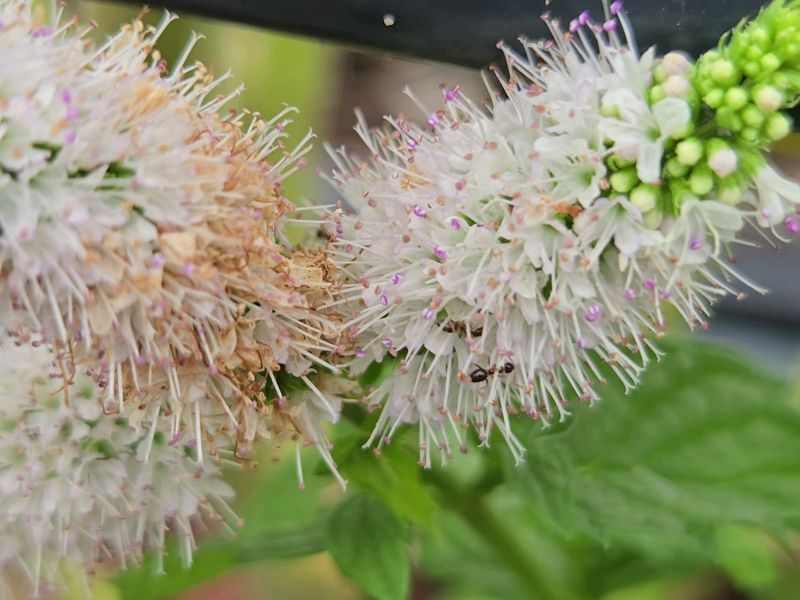Mint might seem like the perfect herb for Washington gardens with our damp climate, but there’s a darker side to this fragrant plant. Growing mint comes with several challenges that many gardeners discover only after it’s too late.
Before you plant that innocent-looking mint cutting, you should know about these potential problems that could affect your garden for years to come.
1. Aggressive Spreading Habits
Mint spreads like wildfire through underground runners called rhizomes. One small plant can quickly colonize vast areas of your Washington garden within a single growing season.
The damp climate in much of Washington state only accelerates this growth, making containment nearly impossible once established. Many gardeners find themselves battling mint for years after initial planting.
2. Overtakes Native Plants
Washington’s delicate native ecosystem faces enough challenges without introducing aggressive mint. Once established, mint easily outcompetes local species for resources, potentially disrupting natural habitats.
The dense growth pattern creates shade that prevents sunlight from reaching smaller native plants. Many Washington gardeners have watched helplessly as their carefully cultivated native plant gardens become mint monocultures.
3. Difficult Permanent Removal
Trying to remove established mint feels like fighting a losing battle. Even tiny root fragments left behind will regenerate into new plants, making complete eradication nearly impossible without extreme measures.
Washington’s moist soil conditions allow these fragments to survive longer than in drier climates. Many gardeners resort to multiple seasons of diligent digging, sifting soil, and even herbicides before finally giving up.
4. Container Escapes
Growing mint in containers seems like a smart solution until you discover its escape artist tendencies. Roots frequently find drainage holes or grow over pot edges, establishing new colonies beyond their boundaries.
Washington’s abundant rainfall can splash seeds beyond containment areas. Even raised beds aren’t foolproof – mint roots can travel under and through small gaps in construction, requiring constant vigilance from gardeners.
5. Attracts Problematic Insects
While mint repels some pests, it’s a magnet for others including spider mites, aphids, and whiteflies which thrive in Washington’s climate. These pests can then spread to other garden plants, creating widespread problems.
Flea beetles particularly love mint and can quickly riddle leaves with tiny holes. The same aromatic oils that make mint attractive to beneficial insects unfortunately draw in these troublemakers too.
6. Moisture-Related Diseases
Washington’s famous rainfall creates perfect conditions for mint diseases like rust and powdery mildew. These fungal problems spread rapidly through mint patches and onto neighboring plants.
Verticillium wilt thrives in our cool, damp springs and can persist in soil for years. Once established, these diseases are difficult to control without chemicals that might harm beneficial garden insects or contaminate nearby vegetable crops.
7. Root Competition With Vegetables
Mint’s aggressive root system doesn’t play nicely with vegetable gardens. Those spreading rhizomes compete for water and nutrients, often stunting growth of nearby food crops you actually want to harvest.
Garden vegetables grown near mint patches in Washington often show signs of nutrient deficiency despite adequate fertilization. The mint literally steals resources from your tomatoes, beans, and other valuable crops before they can access them.
8. Winter Dieback Creates Garden Eyesores
Mint looks fantastic during summer but turns into an unsightly mess during Washington’s wet winters. The stems collapse into brown, mushy heaps that harbor slugs and other pests.
This winter dieback creates bare patches that can lead to soil erosion during heavy rainfall. Spring cleanup becomes an additional chore as dead mint material must be removed before new growth emerges, adding to your garden maintenance schedule.
9. Cross-Pollination Problems
Different mint varieties planted near each other will cross-pollinate, resulting in hybrid offspring with unpredictable flavors. Your carefully selected peppermint might eventually develop strange tastes after a few seasons.
Washington’s abundant pollinators ensure thorough cross-pollination between varieties. Gardeners often discover their prized chocolate mint has lost its distinctive flavor after flowering alongside spearmint or apple mint, rendering harvests less useful for culinary purposes.
10. Neighbor Relations Strain
Mint doesn’t respect property lines, creating potential conflicts with neighbors when it invades adjacent yards. Underground rhizomes can travel surprising distances, emerging unexpectedly in lawns and gardens next door.
Washington’s community-minded gardeners often face embarrassment when their mint becomes their neighbor’s problem. Some homeowner associations have even implemented rules about growing mint due to past disputes over invasive spread between properties.
11. Excessive Harvest Management
Mint grows so prolifically in Washington’s climate that keeping up with harvesting becomes overwhelming. Without regular cutting, plants become woody and less productive, requiring even more maintenance.
Most families can only use so much mint, leading to waste. Even dedicated herb lovers find themselves giving away shopping bags full of mint or watching it flower and decline in quality, creating a cycle of guilt about garden waste.
12. Lawn Infiltration Nightmares
Mint readily invades lawns from adjacent garden beds, creating irregular patches that disrupt the uniform appearance. The difference in texture and growth habit makes these areas stand out unattractively.
Removing mint from lawns requires specialized approaches since normal mowing actually helps spread it further. Many Washington homeowners have resorted to digging up and replacing entire lawn sections after mint infiltration, an expensive and labor-intensive solution.
13. Irrigation System Interference
Dense mint roots can wrap around irrigation lines and clog emitters in sophisticated garden systems. The searching rhizomes seem almost drawn to water sources, creating maintenance headaches.
Washington gardeners often discover mint has grown into drip irrigation holes or wound around buried soaker hoses. Fixing these problems typically requires digging up and replacing sections of expensive irrigation equipment while fighting to remove the invasive mint simultaneously.
14. Compost Contamination Risks
Adding mint trimmings to compost creates a serious risk of spreading it throughout your garden when the compost is later used. Even tiny stem fragments can root and establish new colonies.
Washington’s ideal composting conditions with adequate moisture and moderate temperatures keep mint viable longer than in other regions. Many gardeners must maintain separate compost systems or dispose of mint trimmings through municipal yard waste instead of reusing them.
15. Seasonal Allergies Aggravation
Mint flowers produce significant pollen that can trigger or worsen seasonal allergies for sensitive individuals. Washington’s already challenging allergy season doesn’t need additional pollen sources in home gardens.
The strong aromatic oils can also cause skin reactions for some people during harvesting or garden maintenance. Children and pets may experience irritation from regular contact with mint oils, limiting enjoyment of garden spaces during summer months.

